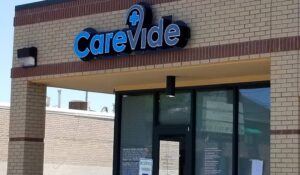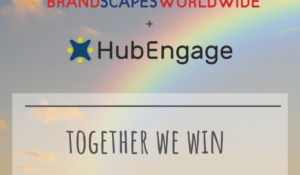Can a change in workplace culture resolve the employee engagement crisis?
Make no mistake: There is an engagement crisis. When just 24 percent of the global workforce considers itself engaged at their workplace, and a Harvard Business Review Analytic Services report finds that 71% of respondents call employee engagement “very important” to achieving overall organizational success, you’re looking at a crisis. And Gallup research, according to Inc.com, found that “actively disengaged employees cost the U.S. $450 billion to $550 billion per year…”
But some companies are getting engagement right. Publix Super Markets is a Florida-based, employee-owned grocery chain with a voluntary turnover rate of just 5%. Southwest Airlines has turned a profit for 43 consecutive years. And Salesforce is one of the most highly valued cloud-computing companies in the nation.

This post examines the connection between engagement and employee-centric cultures from three distinct angles.
- Defining an employee-centric culture
- Keys to changing your culture
- Determining what tools can ease the transition and maximize the effectiveness
One thing is clear: A workplace culture that centers on employees is a powerful talent magnet. It can win you access to the best talent, and it can keep your talent in house, and happily so.
Defining an Employee-centric Culture
Leadership coach Ann Fry defines an employee-centric culture as “… an environment where you honor your employees, where you take care of them, so they can take care of your customers.”
This is a significant turn away from traditional, top-down, company-first human-resource (HR) approaches to workplace culture. Take, for example, how traditional HR handles onboarding. A group of 10-15 employees sit through PowerPoint presentations on the company history, mission, and what they need to do to find success in the company culture.
Key points may include notice of core work hours, the importance of setting measurable goals using the performance review portal; and outlining the protocol for engaging the help desk.
This approach doesn’t work in the modern workplace. For about 76% of the workforce, anyway.
An employee-centric culture focuses on helping employees channel their wants, needs, and preferences to perform – and produce – at a high level. It encourages them to work when, where, and how they want. It confirms that management and colleagues are there to hear them, help them and reward them.
Keys to Changing your Culture
The employment search engine, Indeed, focused on Publix Super Markets, Southwest Airlines, and Salesforce In a blog post on building organizational culture. These companies, though in very different industries, enjoy similar reputations for their great workplace cultures.
What do they have in common?
- They prioritize transparency. Employees that feel included and in the loop on important decisions are motivated to be more engaged and do their best work. One study even found transparency was the #1 factor contributing to employee happiness.
- They hire for cultural fits. People who feel they mesh with their company enjoy greater job satisfaction, longer tenure, more commitment, and superior performance.
- They foster a sense of belonging. Feelings of safety and belonging in employees can improve communication, collaboration, and alignment, according to Neuroscience expert Christine Comaford. And that ultimately boosts company revenue.
These points are particularly important to mobile workforces – employees who don’t spend a lot of their workday at a desk or even in the same building, city, or state. Examples include health professionals, service technicians, hospitality professionals, and sales teams, among others.
Tools to Bring About Change
Moving to an employee-centric culture requires comprehensive planning and the right technology to execute those plans. You must be able to both collect data on employee preferences and have effective channels to accommodate those preferences.
The most effective tools give you these four capabilities.
- Hear your employees. Get employee ideas, insights, and opinions with instant feedback surveys and polls. Keep your finger on the pulse of your culture so you can stream future content that hits home.
- Analyze metrics. View employee engagement levels, satisfaction, knowledge scoring, content advocacy, app usage, gamification stats, and more so you can adapt programs for maximum performance.
- Reward & recognize. Reward and recognize employees who view and share content with points and badges that may be redeemed for prizes and certificates. Create a band of brand ambassadors.
- Inform & inspire. Keep employees plugged in with interactive content, leadership messaging, new product/service training, and fast-track career advancement opportunities.
Ultimately, you would find all of these capabilities in a single, all-in-one app that’s a screen-touch away on a mobile device.
Conclusion
Take a look at your current workplace culture. Does it center on the needs of employees, or of the enterprise? If you were to move toward a more employee-centric approach, do you have access to the tools needed to execute that new approach – especially if you have a workforce that’s on the go?
If your employee engagement program lacks such a platform, it’s time to consider a tool like HubEngage. Its singular purpose is to help you maximize your employee engagement program to unleash the power of an engaged workforce.
Reach one of our product specialists today to schedule a complimentary demonstration.














